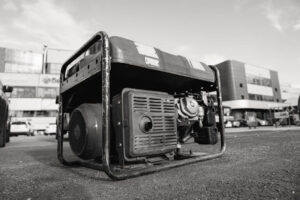Living in the Maryland and Washington D.C. areas comes with great benefits: beautiful landscapes and architecture, eye-popping autumn leaves, and access to great entertainment and work in our nation’s capital, to name a few. But all coins have two sides and living in this area also means enduring frigid winters, storms, and not-so-infrequent power outages. It’s no fun to be stuck in a home without power during a freezing storm or midday in July- not for an hour, and certainly not for several days, as can sometimes happen.
With few exceptions, homes are tied to the municipal power grid, and when a section of that grid loses power due to thunder or snow storms, all the homes tied to that section of the grid lose power. When a winter power outage lasts a few hours, homeowners make do with flashlights, coats, and by keeping the fridge closed. But sometimes outages can last days, and by then the home’s interior is frigid, the food in the fridge may have gone bad, and water pipes can freeze and burst. Code in these regions require homes to have fire-suppressing sprinkler systems, and when those start to freeze, the mess and expense can be immense. Winthorpe, familiar with these regional challenges, can help you prepare your home for such episodes by making your home generator-ready. What does that mean?

Whether we’re building your new home or remodeling your existing home, we can wire your electrical subpanel so it will run off of a generator. You don’t necessarily need to invest in a generator right away; having the home wired to accept one is the important step, and you can purchase a generator later if you prefer. If power is out during a humid summer day or a snowstorm, the home’s systems can be powered independent of the municipal grid until power is restored. Modern-day generators have what’s called a smart switch, which allows you to hook multiple home systems to the generator and then designate the order in which they’ll run. Having all the systems run at once, like the HVAC and the water heater, taxes the generator too much. The smart switch revolutionizes this. By prioritizing systems, the generator will run them separately, in the order you specify. If you prefer to cool the home before heating the water, the generator will run the air conditioner until the home is cool, then switch to powering the water heater. It can also be switched from system to system manually if your needs change on the fly. This prioritization of power usage also means you can power your home on a smaller generator than was necessary in the past, which is nice for your pocket book and your storage area.
If you’re building a new custom home, the cost to wire for generator backup is negligible in the overall costs of the project. For a smaller project, like a master bedroom remodel, the cost will appear greater for the rewiring, simply because the overall project is less expensive than an entire home. However, the out-of-pocket expenses brought on by the aftermath of an extended power outage can quickly outstrip the cost of wiring your home for backup power in the first place. Once the wiring is in, it’s good for the life of the home, which will span many power outages. Each time you don’t have to replace everything in the fridge and freezer or get a hotel room so your family can sleep in a heated room is money saved. Even if you use it once a year, it’s worth it. In the end, it’s a very economical addition to a home, and one that will help you breathe easy when those outages happen.





